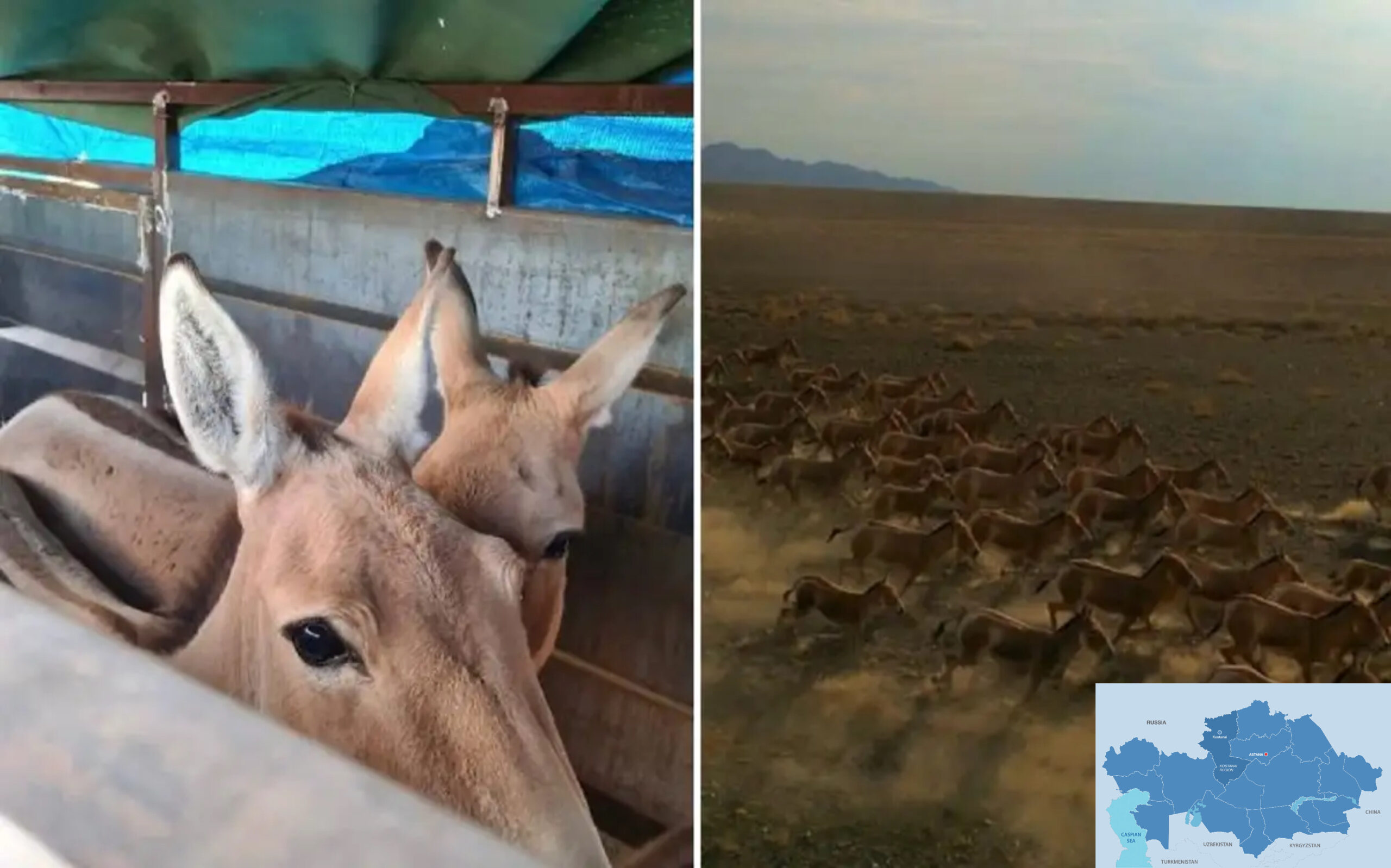ASTANA – Twenty-four kulans arrived at the Altyn Dala Nature Reserve in the Kostanai Region from the Altyn Emel National Park in the Almaty Region on Oct. 2, following a 50-hour journey covering 2,139 kilometers. The transportation of kulans was conducted as part of a program to restore the populations of these wild ungulates in the steppe regions of Central Kazakhstan, their historical habitat.

Kulans became extinct in the wild in Kazakhstan in the 1930s due to excessive hunting. They were first reintroduced to Kazakhstan in 1953 from Turkmenistan. Photo credit: Kazakh Ministry of Ecology and Natural Resources. Click to see the map in full size. The map is designed by The Astana Times.
Kulans became extinct in the wild in Kazakhstan in the 1930s due to excessive hunting. They were first reintroduced to Kazakhstan in 1953 from Turkmenistan. Today, two significant groups of this species exist in the country: on the former island of Kaskakulan in the Aral Sea and in Altyn Emel National Park. The Altyn Emel population, numbering 3,965 individuals, currently represents Kazakhstan’s largest wild population of Turkmen kulans (Equus hemionus kulan). The stable growth in kulan numbers makes it possible to expand their range to other historical habitats, including the Altyn Dala State Nature Reserve.
According to the Association for the Conservation of Biodiversity of Kazakhstan, the transportation of kulans to Central Kazakhstan began in 2017 with air transport, which provided speed but limited capacity for large groups. Preparation for this new method of long-distance ground transport took nearly a year.
Capturing the kulans at Altyn Emel National Park was carried out jointly by staff from Altyn Emel National Park, RSE Okhotzooprom and the Association for the Conservation of Biodiversity of Kazakhstan (ACBK). The kulans were transported in small groups of eight within three containers designed to allow the animals to be fed and watered en route. Each container was equipped with video monitoring to observe their condition and behavior closely.
“We adopted the container design from our colleagues in South Africa, who have extensive experience transporting large animals, including long-distance transport of zebras, which are similar to kulans. Kulans are also herd animals, so their stress levels are reduced when they’re together. This approach has been successfully used in Kazakhstan before, but only over shorter distances,” said ACBK Senior Specialist Albert Salemgareyev.
For the first year, the animals will reside in a 56-hectare enclosure. In a neighboring enclosure are Przewalski’s horses, which were transported to the Torgai steppe from the Prague Zoo in June. The enclosure system is part of the Wild Ungulate Reintroduction Center, established at the reserve in 2016 to help restore indigenous wild ungulates in the Central Kazakhstan steppe.
Previously transported kulans have already been released into the wild, with ongoing monitoring confirming successful adaptation. In 2024, the first two foals were born in the wild.
The kulan reintroduction program is part of the Altyn Dala Conservation Initiative, with partners including the Committee of Forestry and Wildlife, the Association for the Conservation of Biodiversity of Kazakhstan (ACBK), the Frankfurt Zoological Society (FZS), the Royal Society for the Protection of Birds (RSPB), Fauna & Flora (FFI), and with additional support from Nuremberg Zoo, the Leibniz Institute for Zoo and Wildlife Research (IZW), and the South African wildlife transport agency Conservation Solutions.
In September, two Amur tigers from the Netherlands were transported to the Ile-Balkhash State Nature Reserve in the Almaty Region to revive wild tiger species.


